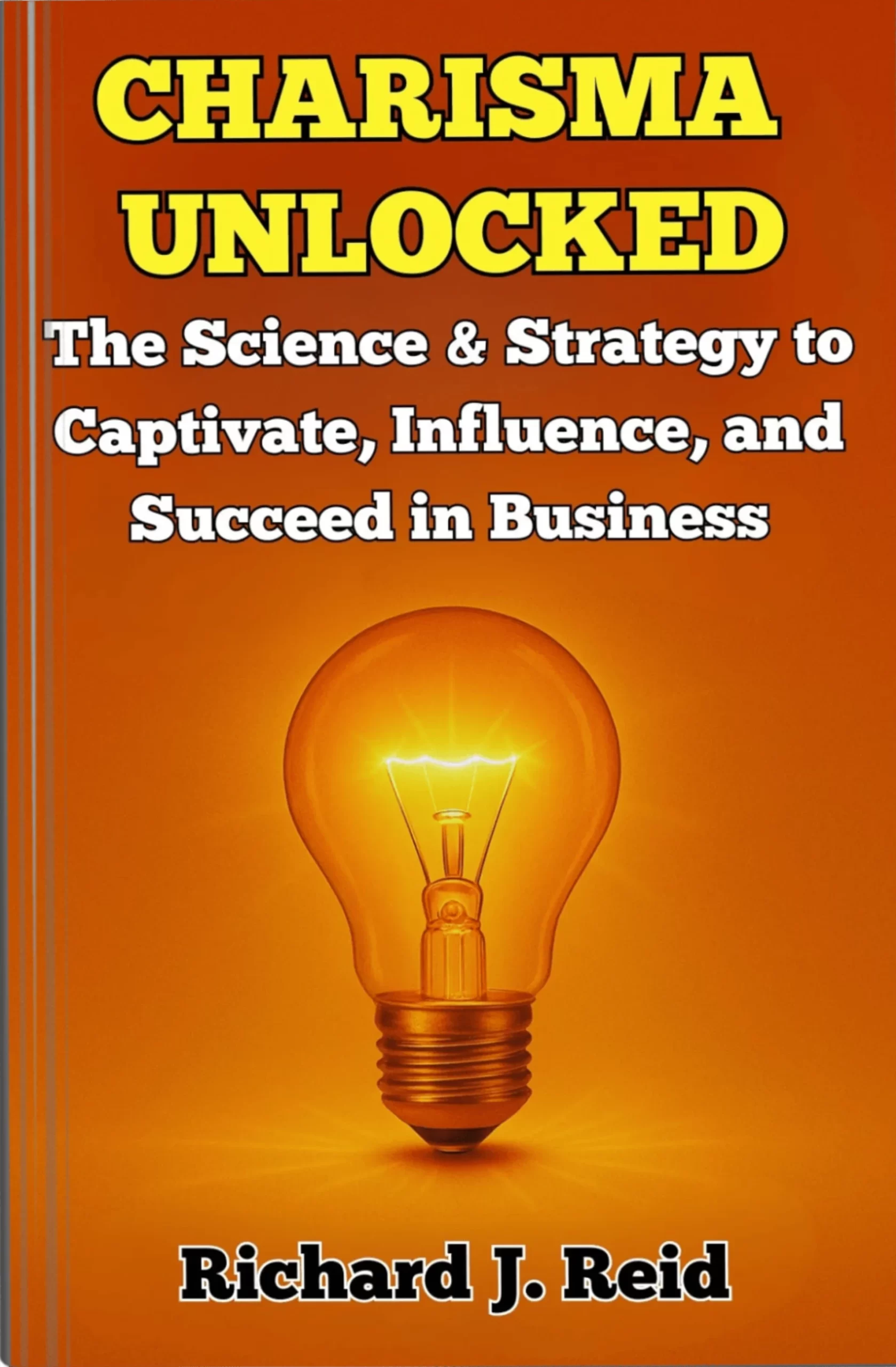In recent years, the lines between coaching and therapy have begun to blur. While therapy traditionally addresses emotional challenges stemming from the past, coaching focuses on actionable steps to achieve specific goals in the future. Both modalities are essential in their own ways, but when combined, they offer a powerful and transformative experience for clients. Enter holistic mental health coaching—a seamless blend of the reflective depth of therapy and the forward momentum of coaching.
This combined coaching approach empowers individuals to address mental and emotional challenges while actively building skills, habits, and behaviours to thrive in both their personal and professional lives. By combining the best of both worlds, Richard Reid, a trusted expert in coaching and therapy, offers a unique solution that supports clients in achieving lasting, meaningful transformation.
This whitepaper explores the differences and synergies between therapy and coaching, explains how a holistic approach can produce better outcomes, and positions Richard Reid as a leader in this innovative field.
Understanding the Differences Between Coaching and Therapy
To fully appreciate the value of a combined approach, it is important to understand the distinct roles of both coaching and therapy. While they often overlap, they typically serve different purposes, timelines, and client needs.
Coaching: Focused on Action and Goals
Coaching is future-oriented. It helps individuals identify their ambitions and provides the tools and accountability required to achieve them. Coaching clients are usually emotionally stable and looking to improve their performance, build new habits, or achieve clarity around personal or professional goals.
Key Features of Coaching:
- Forward-Looking: Designed for individuals seeking personal growth or enhanced performance.
- Practical and Structured: Focused on achieving goals through actionable steps and measurable outcomes.
- Client-Led: The client determines their own agenda, with the coach acting as a guide or facilitator.
Examples of individuals who benefit from coaching include leaders working on their communication skills, professionals seeking career advancement, or individuals building confidence to achieve personal milestones.
Therapy: Focusing on Healing and Reflection
Therapy, by contrast, often delves into past emotional distress or trauma. It aims to resolve mental health challenges by addressing deep-rooted issues that may prevent clients from moving forward. Therapy provides a safe space to work through anxiety, depression, grief, or interpersonal difficulties.
Key Features of Therapy:
- Past-Focused: Explores emotional wounds and experiences that shape behaviours and thoughts.
- Deeper Emotional Work: Often includes addressing trauma, relational dynamics, or mental health conditions.
- Clinician-Led: While patient involvement is key, therapists take a lead role by offering psychological treatments and therapeutic frameworks.
Therapy tends to benefit individuals who are healing from emotional challenges that interfere with their well-being and daily function.
Coaching vs Therapy: A Clearer Picture
| Feature | Coaching | Therapy |
|---|---|---|
| Focus | Future growth and goals | Healing from past experiences |
| Client Profile | High-functioning individuals | Individuals in emotional distress |
| Approach | Action-oriented, solution-focused | Reflective, psychological |
| Techniques | Goal-setting, accountability, skills | Emotional work, insights, healing |
While these differences are notable, they are not mutually exclusive. Many individuals stand to benefit from a hybrid approach that addresses both their emotional health and their capacity for future growth.
The Case for Combining Coaching and Therapy
The traditional separation of coaching and therapy is no longer sufficient for many individuals seeking more comprehensive support. A combined coaching approach offers a more integrated, adaptable method to meet the varied needs of modern life.
What Is a Combined Coaching Approach?
A combined coaching approach refers to a model where principles of coaching and therapy are used together to address both emotional well-being and personal development. This holistic mental health coaching method acknowledges that clients are complex individuals with both emotional and practical needs.
For instance:
- A leader seeking coaching support to enhance their decision-making skills may also uncover underlying imposter syndrome that requires therapeutic exploration.
- An individual recovering from trauma may simultaneously wish to work toward specific goals, such as re-entering the workforce or building meaningful relationships.
Rather than addressing these needs separately, a combined approach offers integrated solutions.
The Advantages of Bridging Therapy and Coaching
- Addresses the Whole Person: A combined method takes a more complete view of the client, addressing emotional concerns alongside actionable goal-setting.
- Solves Root Causes: Coaching alone risks leaving unresolved emotional issues untreated, while therapy alone may lack the structured progress individuals need. Combining the two tackles both the root causes of challenges and forward-focused growth strategies.
- Promotes Long-Term Transformation: This approach cultivates both insight and action, empowering individuals to make sustainable mental, emotional, and behavioural changes.
- Enhances Self-Awareness and Accountability: Therapy fosters awareness of patterns and behaviours, while coaching uses this self-awareness to drive change and results.
- Fosters Emotional Resilience: Clients develop tools to regulate emotions and build resilience while simultaneously progressing toward concrete goals.
How Holistic Mental Health Coaching Works
A combined coaching and therapy approach is tailored to the individual’s unique situation. Here is how it typically works:
1. Assessment and Goal Alignment
The process begins by discussing complexities in the client’s life, identifying both emotional challenges and tangible objectives. This dual perspective ensures therapy and coaching elements are applied appropriately.
Example: A stressed executive seeks leadership development coaching, but the presence of anxiety and prior burnout leads the coach to begin with therapeutic techniques.
2. Therapeutic Interventions
Clients first address emotional barriers that may hinder progress. Therapy-oriented techniques such as cognitive reframing, mindfulness, or self-reflection are brought into the coaching process.
Example: A client struggling with perfectionism engages in therapeutic strategies to identify the origins of this mindset and gradually shift unhelpful thought patterns.
3. Coaching for Growth
Once emotional blocks are addressed, clients engage in practical coaching exercises, such as goal-setting, new habit formation, and accountability measures.
Example: After resolving self-esteem issues in therapy, a professional seeks coaching to learn assertiveness and navigate the workplace with confidence.
4. Ongoing Reflection and Adaptation
Throughout the process, the client continues to reflect on progress, integrating emotional insights gained during therapy with actionable coaching strategies.
Applications of a Combined Coaching Approach
This holistic style of coaching is particularly effective in addressing a wide range of personal and professional challenges:
- Career Development: Coaching helps professionals climb the ladder, while therapy addresses fears, self-doubt, or past workplace trauma holding them back.
- Leadership Mastery: High-performing leaders benefit from a better understanding of their emotional intelligence, while coaching develops their communication, decision-making, and conflict resolution skills.
- Burnout Recovery: Therapy explores the emotional toll of chronic stress, while coaching provides actionable ways to prioritise self-care and set boundaries.
- Improved Relationships: Therapy resolves past relational patterns, while coaching uncovers strategies to build healthy, productive connections.
The flexibility of this model ensures that clients receive comprehensive and adaptable support for their unique journeys.
Why Organisations Benefit from Holistic Coaching
Organisations increasingly recognise the value of integrated coaching and therapy for their leaders and employees.
Key Organisational Benefits
- Enhanced Employee Well-Being: Teams equipped with mental health support alongside development coaching become better balanced and more resilient.
- Stronger Leadership: Leaders who explore emotional patterns while developing leadership strategies are more empathetic, decisive, and impactful.
- Improved Performance: Addressing both emotional and practical dimensions minimises distractions and helps professionals focus on high-value tasks.
- Reduced Stress and Turnover: Combining coaching and therapy fosters a supportive culture, reducing absenteeism and staff burnout.
- Sustainable Growth: A holistic solution ensures employees thrive both personally and professionally, fostering long-term success.
Richard Reid: A Leader in Holistic Coaching
Richard Reid stands out as a pioneer in coaching and therapy, offering a unique, tailored approach that combines both modalities for maximum impact. His method integrates clinical expertise with practical coaching strategies to help clients overcome emotional challenges, establish clarity, and achieve their goals.
Why Choose Richard Reid
- Extensive Experience: With years of experience as both a therapist and performance coach, Richard brings unparalleled expertise to his practice.
- Proven Strategies: Richard’s combined coaching approach has led to measurable results for professionals, executives, and organisations worldwide.
- Tailored Support: Every client journey is bespoke, with personalised interventions designed to meet their unique emotional and professional needs.
- Trusted Mentor: Richard’s empathetic and results-oriented style fosters trust, accountability, and transformation in his clients.
Final Thoughts
As the demands of modern life grow more complex, traditional coaching or therapy alone often falls short. Combining the reflective depth of therapy with the action-oriented focus of coaching offers individuals a comprehensive solution to unlock their full potential. This holistic mental health coaching approach supports both emotional healing and practical growth, empowering clients to live more balanced and fulfilling lives.
For organisations looking to offer a competitive edge to their teams—or for individuals ready to achieve lasting transformation—expert guidance from Richard Reid is the key to a sustainable path forward.
If you are ready to begin your journey to personal and professional transformation, contact Richard Reid today to start working with an expert in holistic coaching and therapy.




















